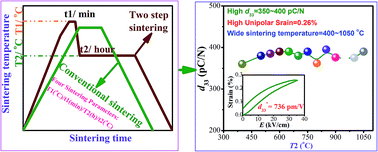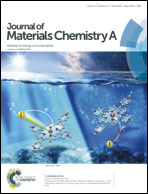Enhanced piezoelectricity over a wide sintering temperature (400–1050 °C) range in potassium sodium niobate-based ceramics by two step sintering
Abstract
Here, we report enhanced piezoelectricity over a very wide sintering temperature range (400–1050 °C) in 0.96(K0.4Na0.6)(Nb0.96Sb0.04)O3–0.04Bi0.5K0.5Zr0.9Sn0.1O3 lead-free ceramics prepared by two step sintering. All ceramics fall into the R–T phase boundary at room temperature, and a dense microstructure without serious loss of alkali elements was found in the samples. The enhanced dielectric, ferroelectric, and piezoelectric properties were attained by two step sintering over a wide sintering temperature range of 400–1050 °C. Most interestingly, the enhanced d33 values of 350–400 pC N−1 can be achieved over a wide temperature range of 400–1050 °C, and the temperature gap range of 650 °C is much wider with respect to previous studies by two step sintering. Besides, an enhanced unipolar strain of ∼0.26% (d*33 ∼ 736 pm V−1) can also be attained in the ceramics.


 Please wait while we load your content...
Please wait while we load your content...